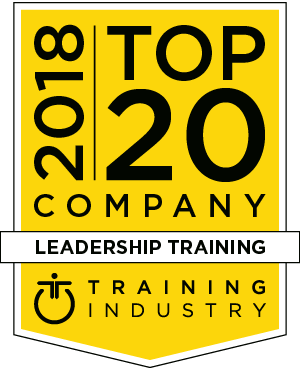What is the employee experience? What does it have to do with Pokemon Go? Pokemon Go is the rage right now. I knew nothing about it, and so I slinked around the internet trying to figure out why my neighbors were walking around the parking lot like dazed zombies with their noses glued to their phones. I then played it cool and acted like I was up to speed the entire time by throwing around terms like “gyms” and making sure my co-workers knew that the plural of Pokemon was still Pokemon.
You might feel a little like me with my Pokemon dilemma when it comes to the new HR buzzword: the “Employee Experience.” So, exactly what do we mean when we use the term Employee Experience? To explain, let me first begin with what the Employee Experience (EX) is not.
 EX is not what we call the “Employee Life Cycle” (ELC). The Employee Life Cycle is part of a larger EX concept. ELC is made up of all the steps or processes in which an employee participates during his or her relationship with an organization. The ELC is chronological and sequential, and assumes a beginning and an end. It takes into account important events and processes, such as recruiting, onboarding, employee development, promotion, exit interviews, etc., and it starts with an employee’s first contact with an organization to the last interaction after termination. The Employee Life Cycle is mainly the purview of an organization’s HR department. Many think that EX = ELC. But, such a definition would miss a key point, which is, as will be explained below, that EX is the responsibility of each leader within an organization.
EX is not what we call the “Employee Life Cycle” (ELC). The Employee Life Cycle is part of a larger EX concept. ELC is made up of all the steps or processes in which an employee participates during his or her relationship with an organization. The ELC is chronological and sequential, and assumes a beginning and an end. It takes into account important events and processes, such as recruiting, onboarding, employee development, promotion, exit interviews, etc., and it starts with an employee’s first contact with an organization to the last interaction after termination. The Employee Life Cycle is mainly the purview of an organization’s HR department. Many think that EX = ELC. But, such a definition would miss a key point, which is, as will be explained below, that EX is the responsibility of each leader within an organization.
Download: The Employee Experience Survey
What the Employee Experience Is and Isn’t
The Employee Experience is not a set of perks, such as foosball tables and free sodas in the break room. While perks like these are easy to implement, and they make employees feel better during the short-term, these kinds of incentives do very little to engage employees or to solve core business problems.
EX is not the “Employee Value Proposition” (EVP). EVP is another popular buzzword in the HR community, lately. Again, while EVP is a component of the larger EX concept, it’s focus is more narrow. EVP examines the “brand” your organization has with respect to your future and current employees. Many organizations recognize the importance of building and managing their employee brand. EVP goes beyond attraction, however, and looks at other value areas that impact an employee’s decision to join, stay, remain engaged, etc. While EVP is an important and emerging area, it does not tell the entire EX story.
EX is not talent management, nor is it human resources development. Again, these are important elements to consider when designing the right EX, but they are segments of a larger landscape. EX is not employee satisfaction; we aren’t trying to capture how an employee “feels” about the organization.
So, now, with a drum roll, this is definition of the Employee Experience: The Employee Experience is the sum of the various perceptions employees have about their interactions with the organization in which they work.
Wow. That was anti-climactic! Indeed, at first blush, this seems like a cryptic, academic definition. But, when you unpack the elements you begin to see much more. 
When we talk about perceptions we are talking about the totality of an employee’s experiences. Thus, EX is much more than Employee Value Proposition, Employee Life Cycle, or casual Fridays. We are also talking about days where there are difficult performance reviews, or how well did a manager support an employee the day she learned her son had cancer? Or consider whether the company really did anything to address its employees’ concerns following its last employee engagement survey. These types of scenarios impact EX, too. Maybe, more than all the ping pong tournaments combined.
Read the Book: The Employee Experience
Notice that the word “perceptions” is the heart of our definition. It’s not about what actually happened; rather, it’s about how the employee perceived what happened. Hence, it’s not just a factor of what a company throws at its employees; it’s how they perceive and interpret the company’s intentions. EX can be good or bad; it can be positive or negative. Your EX can either destroy your organization or transform it into something great.
Time and time again, we find that every business outcome has its root in an individual or a group of people. This observation leads us to realize that success does not begin with a spreadsheet, a slogan, or even with a piece of game-changing technology. Success begins and ends with human beings.
How to Establish the Right Employee Experience
EX is primarily concerned with one of the most fundamental question in business: How do I establish the right EX (i.e., the right employee operating environment) so I can help my people deliver great results? Once you accept this notion – that it’s all about your people – then you really begin to see how the right EX can be transformative. Hence, your most important job as a leader is to design, build, and maintain the right EX so that the sum of your employees’ perceptions, whether across your organization, division, or team, is such that it encourages and produces the very best in your people.
Richard Branson masterfully summarized EX and its importance when he stated:
So, my philosophy has always been, if you can put your staff first, your customers second, and shareholders third, effectively, in the end, the shareholders do well, the customers do better, and [your staff remains] happy.
Here is a quick recap of how we break down EX:
- EX ≠ ELC, EVP, Perks, or Talent Management
- EX is more than an HR responsibility; EX is a fundamental concern of all business leaders
- EX = design thinking
- EX is based on the totality of perceptions, both good and bad
- When properly built, the right EX has the power to transform your organization


















